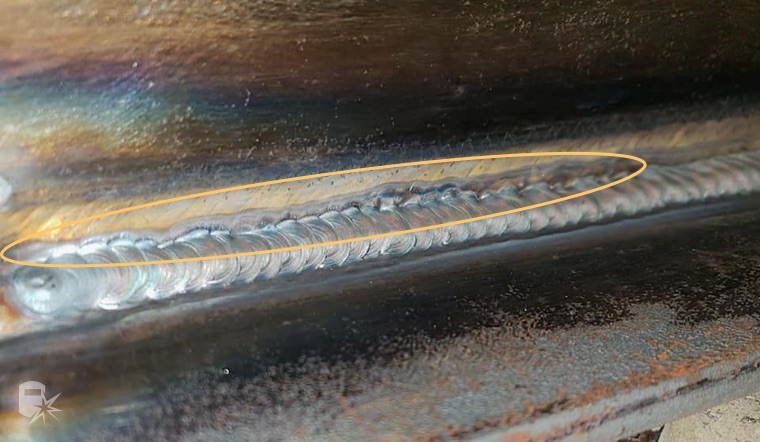Comprehending the Causes and Solutions for Undercut Welding in Steel Manufacture Procedures
In the world of steel manufacture procedures, the event of undercut welding poses a significant challenge that demands an extensive understanding of its causes and practical services. The complex interplay of different elements during welding operations can result in this undesirable phenomenon, impacting the architectural honesty and total top quality of the bonded joints - Preventing weld undercut. By exploring the root causes of undercut welding and exploring effective therapeutic actions, makers can raise the requirement of their craftsmanship and ensure the production of remarkable steel elements
Typical Causes of Undercut Welding
Frequently overlooked in steel fabrication, undercut welding occurs as a result of various variables that demand precise interest and know-how to be properly minimized. One typical cause of undercut welding is too much warm input. When the heat input is also high, it can lead to the melting and succeeding erosion of the base product along the edges of the weld joint, creating a groove or undercut. Furthermore, improper welding strategies, such as utilizing the incorrect welding angle or travel speed, can likewise contribute to damage formation. Insufficient shielding gas insurance coverage is another vital element that can cause undercutting. Not enough gas protection falls short to safeguard the weld swimming pool effectively, leading to oxidation and undercut flaws. Moreover, the option of welding parameters, such as voltage, present, and cord feed speed, plays a substantial role in the incident of undercut welding. Comprehending these usual causes is important for applying preventive procedures and ensuring top notch welds in steel fabrication processes.
Impact of Incorrect Welding Parameters
Incorrect welding specifications can substantially compromise the stability and top quality of bonded joints in steel construction processes. The effect of incorrect welding parameters manifests in various ways, bring about architectural weak points and flaws in the welded components. One crucial aspect affected by inappropriate welding criteria is the penetration depth of the weld. Insufficient warmth input as a result of reduced welding currents or excessively high traveling rates can lead to inadequate fusion in between the base steels, resulting in incomplete joint infiltration and deteriorated bonds. On the other hand, excessive warmth input created by high welding currents or sluggish travel rates can result in burn-through and excessive support, creating a brittle and unpredictable weld structure. Additionally, inaccurate parameters such as inappropriate voltage setups or incorrect electrode angles can add to unpredictable weld grain accounts, lack of blend, and enhanced chances of issues like damaging. Therefore, precise focus to welding specifications is paramount to make certain the production of high-quality welds with the preferred mechanical residential properties and structural honesty.
Result of Improper Lantern Angle
Inappropriate lantern angle in welding procedures can substantially affect the high quality and stability of the final weld joints in steel manufacture procedures. Undercutting is a common welding defect where a groove forms along the weld toe, damaging the joint and endangering its architectural stability.
A lantern angle that is also high can result in inadequate penetration, incomplete blend, and raised spatter. On the various other hand, a torch angle that is too shallow can result in extreme penetration, burn-through, and distortion of the base material. Preventing weld undercut. Correct lantern angle is vital for guaranteeing consistent weld top quality, stamina, and appearance
To avoid damaging and various other problems caused by inappropriate torch angles, welders must be educated to preserve the correct lantern angle throughout the welding process. Regular tracking and modification of lantern angles throughout welding can help attain sound welds with minimal flaws.
Function of Inadequate Welding Techniques

Another element of poor welding methods is inappropriate weld prep work. Poor cleansing of the base steels, incorrect joint layout, or inadequate side prep work can all contribute to undercut welding. Poor securing gas protection or utilizing the wrong kind of gas can result in insufficient combination and the formation of undercut defects.
To address the duty of poor welding methods in metal fabrication procedures, it is crucial to give detailed training for welders. Appropriate education on welding criteria, joint preparation, and shielding gas selection can aid avoid undercut welding and guarantee high-quality welds in steel construction projects.
Reliable Solutions for Undercut Welding
Attending to undercut welding in metal manufacture needs implementing reliable services to boost weld high quality and structural stability. One of the main services to battle undercut is to change welding criteria such as voltage, present, and take a trip speed to make certain appropriate warmth input and combination. By fine-tuning these setups, welders can avoid too much melting of the base metal and filler product, reducing the chance of undercut formation.
Furthermore, proper joint preparation is critical in stopping undercut. Ensuring clean base steel surface areas without impurities and using the proper bevel angle can aid promote much better weld infiltration and reduce the danger of undercut - Preventing weld undercut. Using suitable welding methods, such as oscillating the torch or weaving, can likewise assist in dispersing heat uniformly and filling up the weld joint adequately, reducing the opportunity of undercut issues
Furthermore, choosing the right welding consumables, consisting of electrodes and filler steels, is essential in minimizing undercut. Utilizing products with ideal chemical make-ups and mechanical buildings can add to achieving sound welds with minimal undercut. Routine inspection and high quality control steps must likewise be carried out to identify and resolve undercut concerns promptly, ensuring the overall integrity of made steel parts.

Verdict
To conclude, recognizing the reasons and options for undercut welding look at these guys in metal construction processes is essential for achieving top quality welds. By addressing usual reasons such as inaccurate welding specifications, improper torch angle, and inadequate welding strategies, welders can protect against damaging and guarantee strong, durable welds. It is important to take notice of these variables and carry out effective solutions to boost the general welding process and end product quality.
